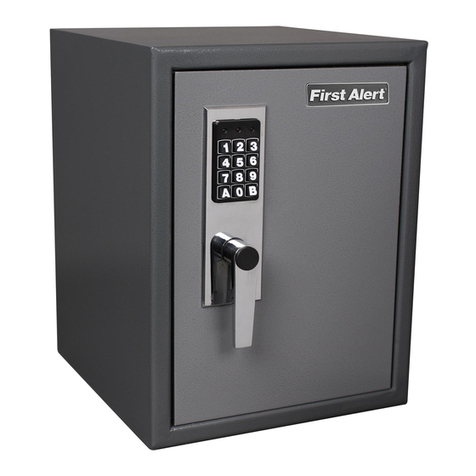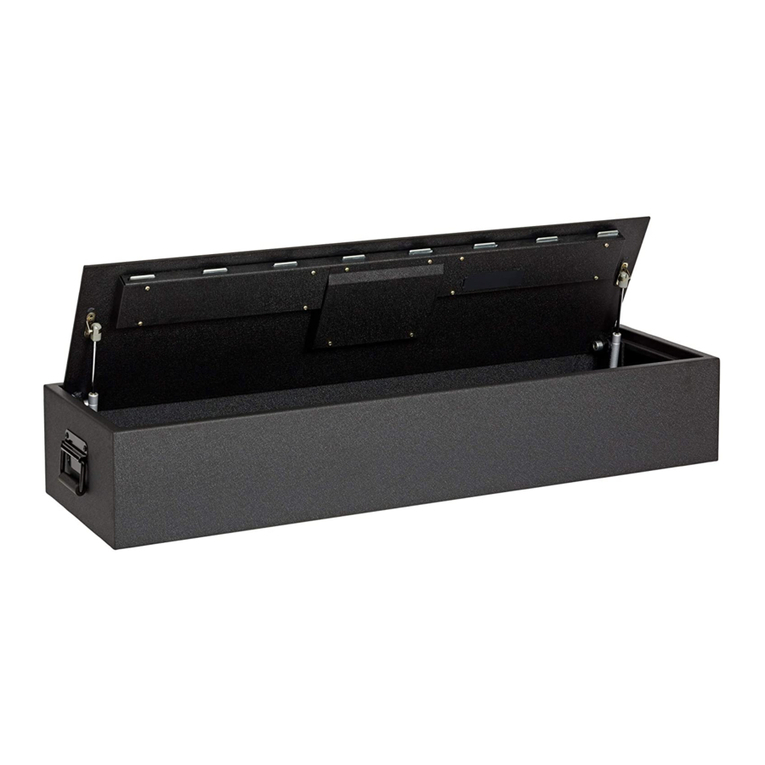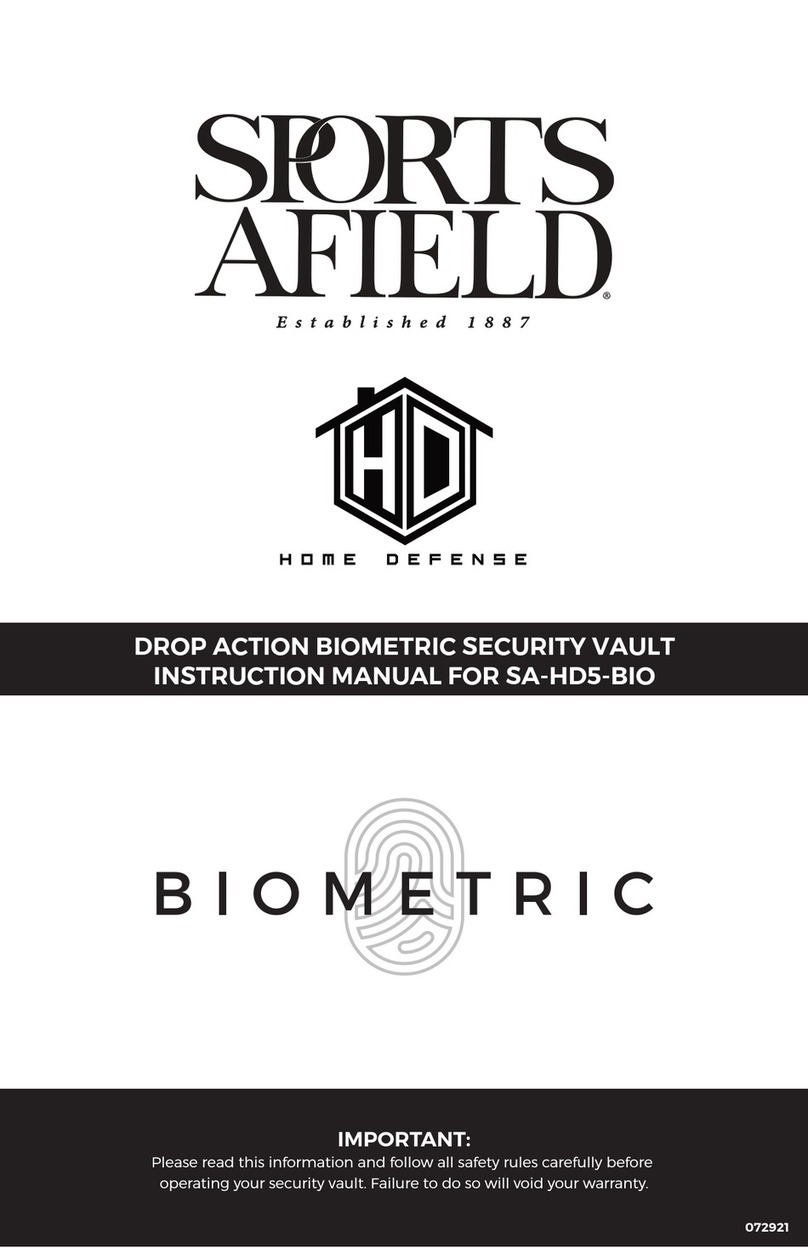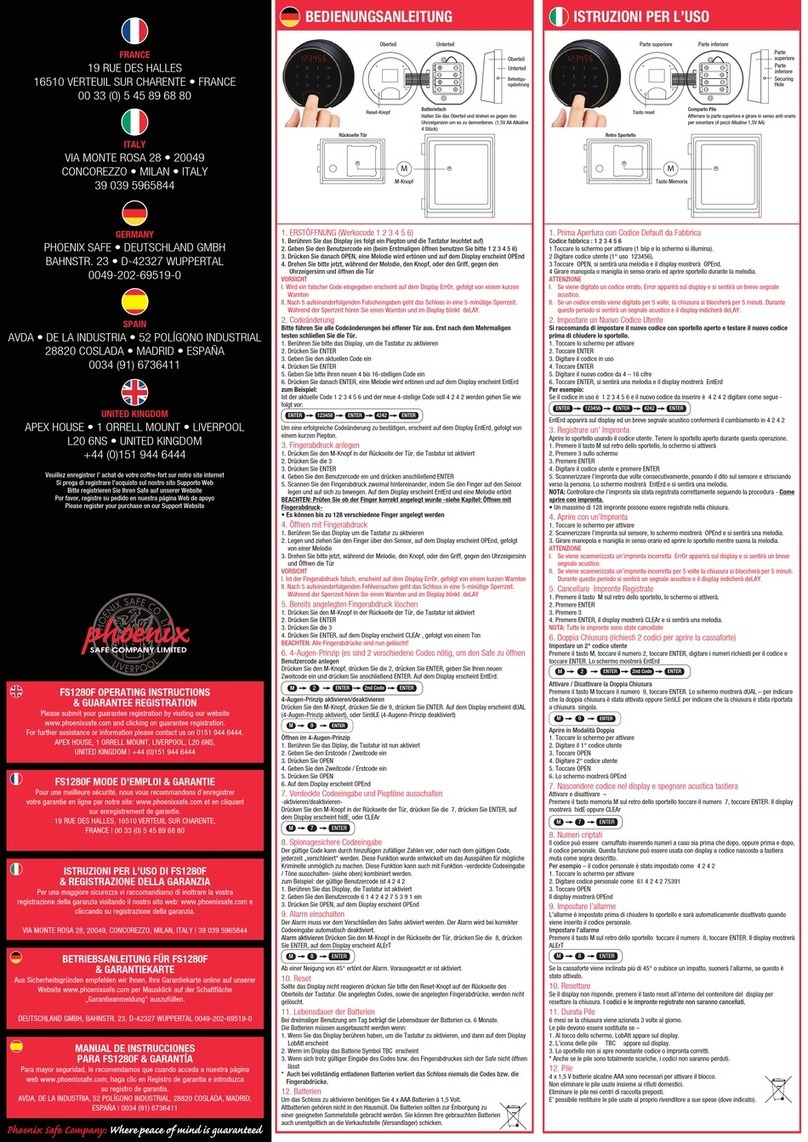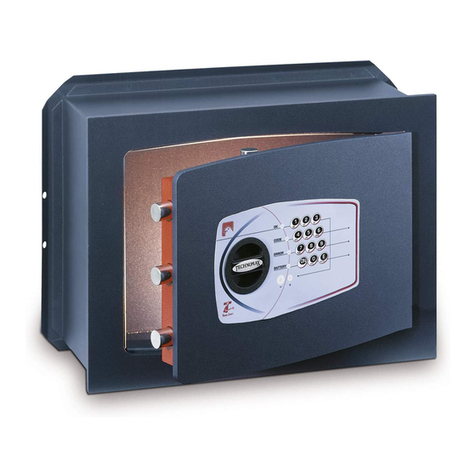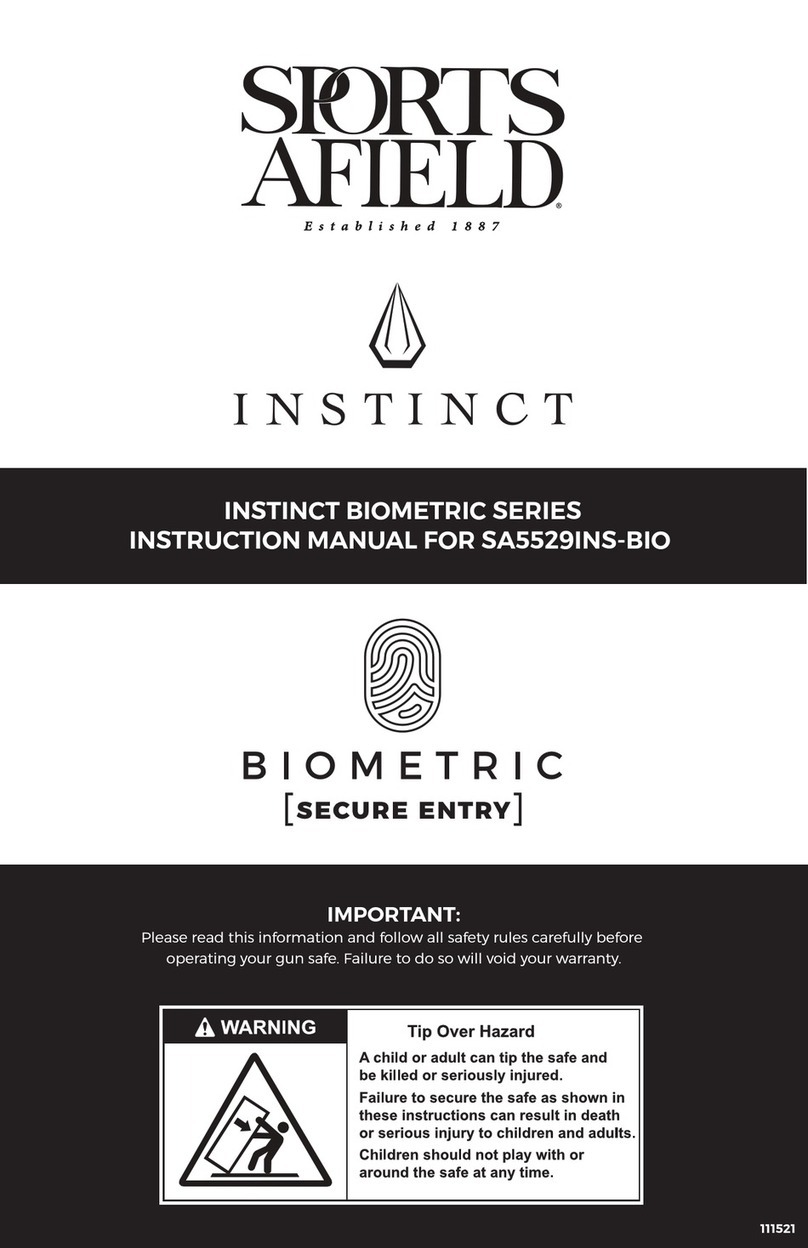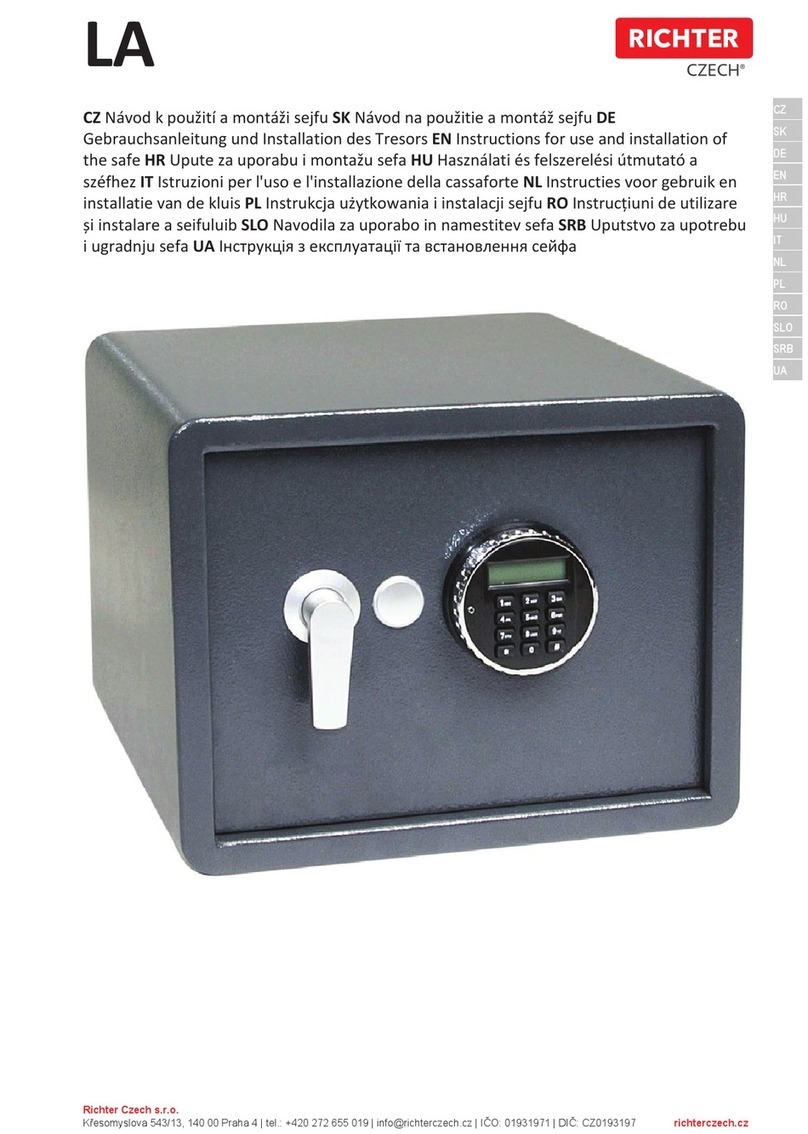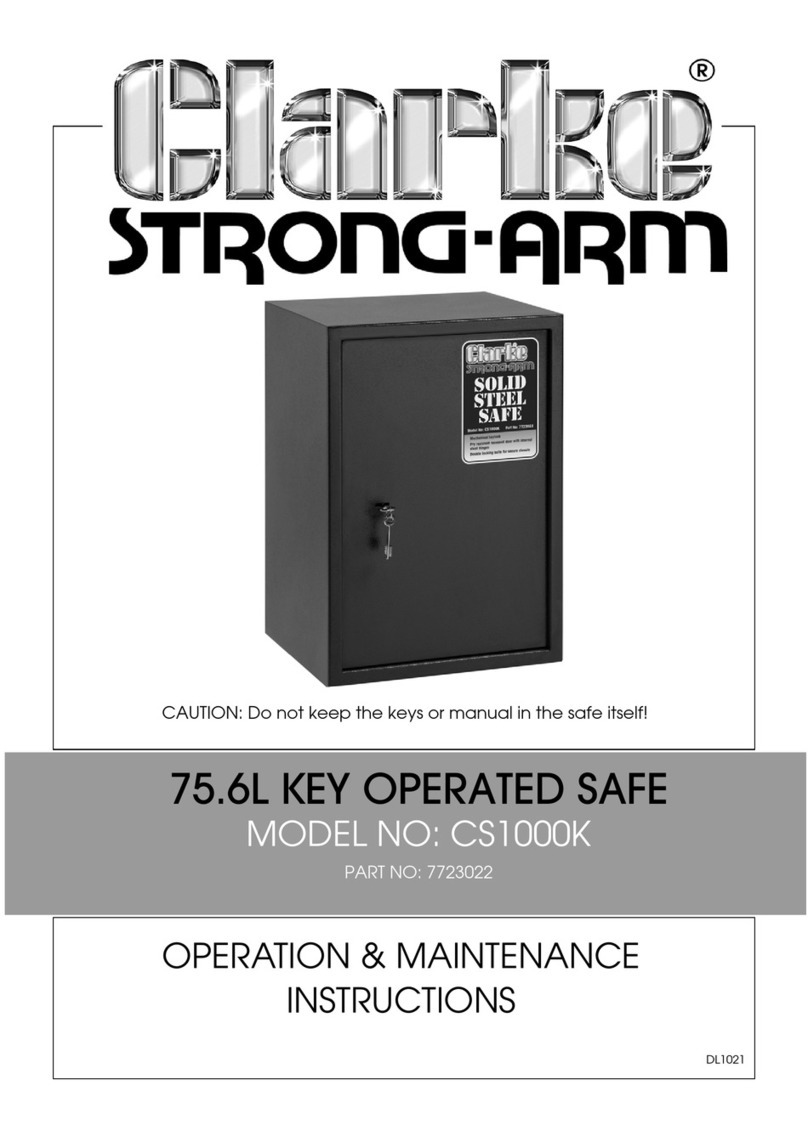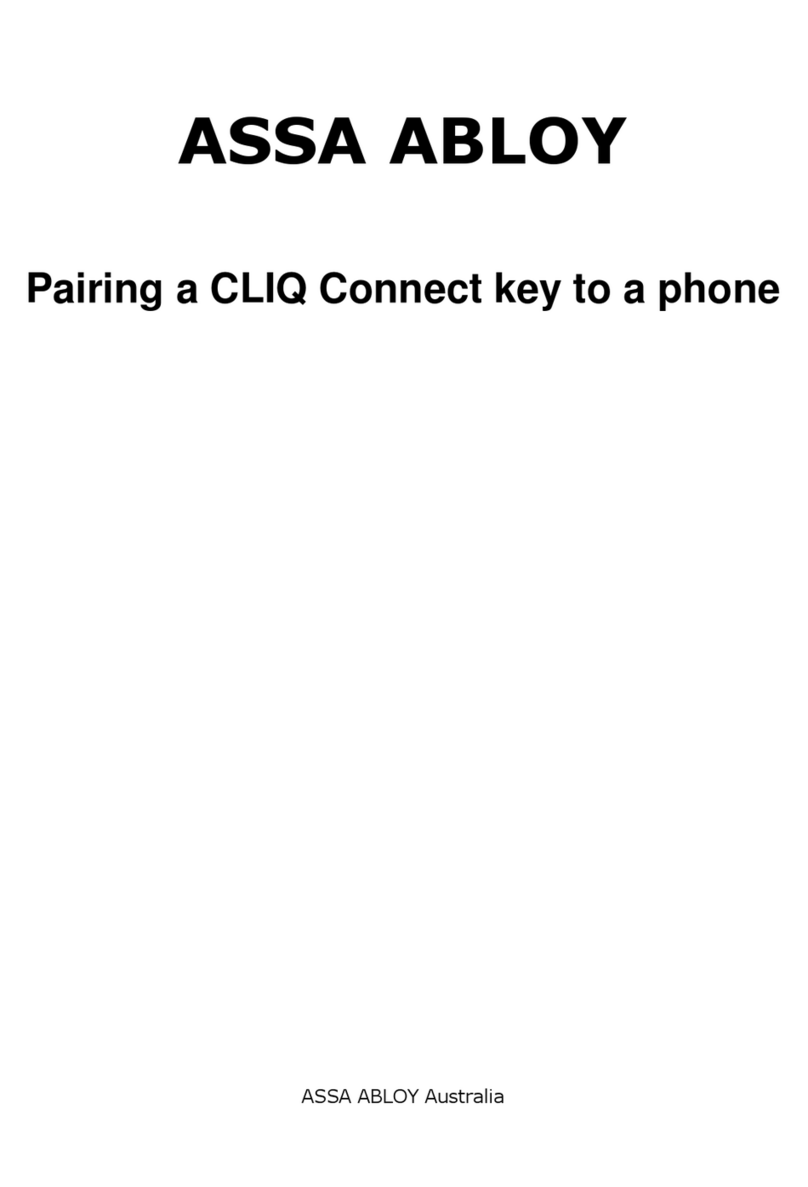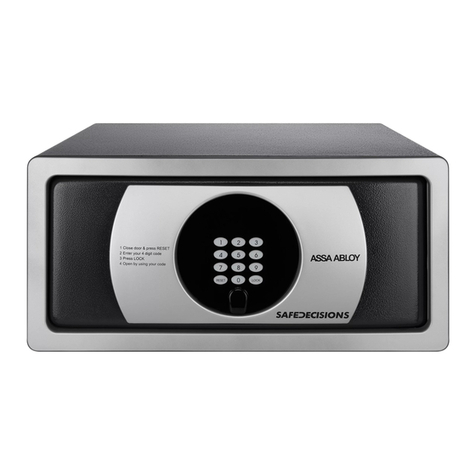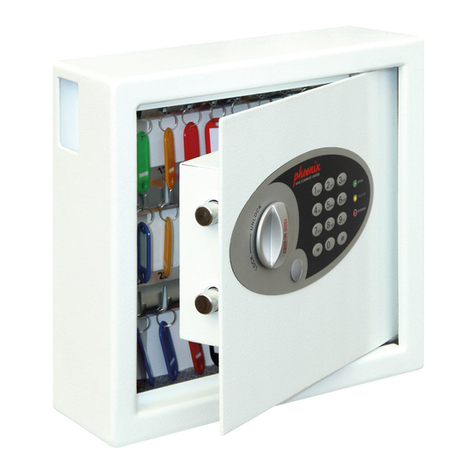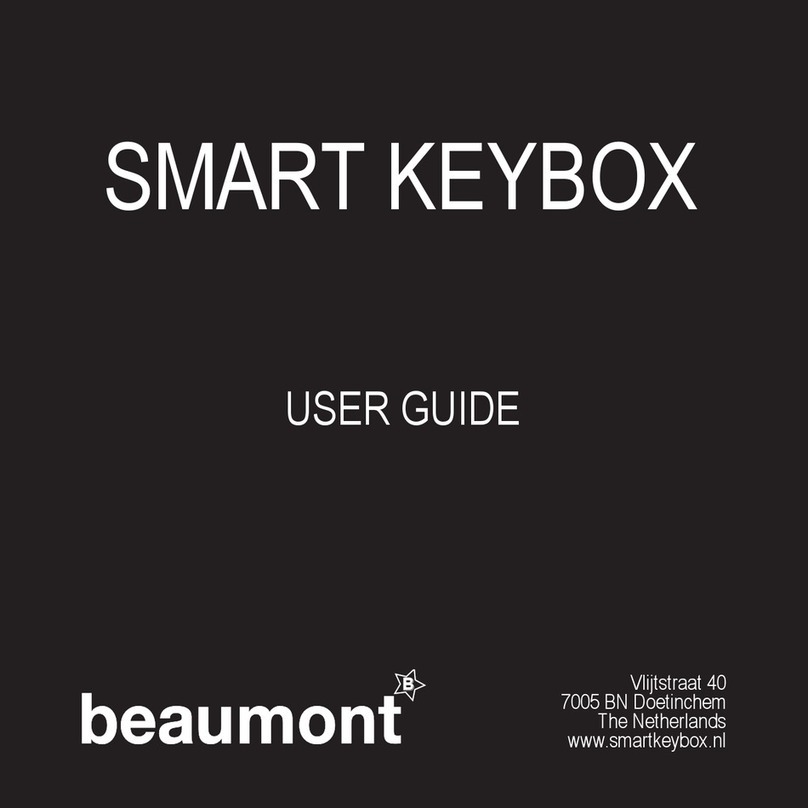
Talleres de Escoriaza, S.A. –SAFES –USER MANUAL Page 8 of 15
4.2.2- Control Unit
The control unit incorporates a nonvolatile memory chip, a clock and calendar in real time, and a
relay which send a signal to the motor to allow safe opening and closing. The control unit feeds with
the battery module case.
Memory of control module
Relating to the locking plan, this is transmitted via the portable programmer. Two types of
information are stored in the memory of the safe: initialization operations and / or updatings with the
locking plan of the memory of the control unit of the safe and operations recorded relating to the
events log, where all operations performed by users are recorded.
For information concerning to the locking plan is the system code of the hotel, the room number to
which it is associated, the grant required (as safes always require a grant) etc.
And in the event log all events that occur are stored, that is, openings and openings attempts,
password changes, etc.
Of course the memory has a limited capacity, measured in number of events that the safe can store
in its memory, the number of time zones, calendar, etc.. In fact, as the safe is set, no time zones or
calendars and limit the number of users on the number of users affected are used. However, there
are limits and are as shown in the following table:
Activation and Expiration dates
Non-volatile memory means that if the safe is run out batteries, memory is not lost. All that will
happen is that the internal clock of the safe “stop”, and therefore have to set the time updating the
safe with the portable programmer.
Clock and calendar
The control unit of the safe has a clock and calendar, which is put in time when you initialize or
update the safe through the portable programmer. What actually happens is that when we send
data from the computer to the portable programmer, are sending both the date and time of the
computer from the data is loaded. And then this time will be transmitted to the safe from the
portable programmer. Therefore the date and time of the safe is the date and time of the computer.
The actual calendar is also transmitted. That’s because the control unit recognizes all weekdays
from Monday to Sunday every week of the year or halidays of the hotel. In fact, this holiday
calendar does not impact too much on the operation of the safes, since for hotel guests, there is no
difference between a holiday of another who is not for guests in a hotel (this only affects, usually, to
staff). It is important the correct calendar and clock of the safe (is for the event log that is stored in
it) so that you are able to know the exact date and time at which each event occurred.
If the safe is without batteries, the clock will stop and you will lose both the clock and the calendar
(not the rest of information). When we make the change of batteries, the clock will start, but it will
take a completely random time and date may not coincide with the actual date and time.
Therefore, when we make a change of batteries, we will have to update them to transmit the correct
date and time.
